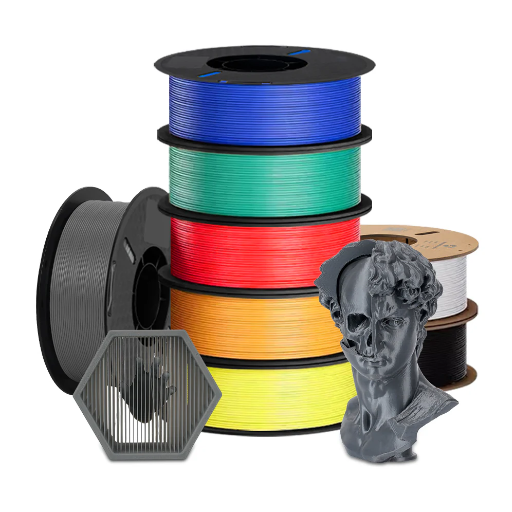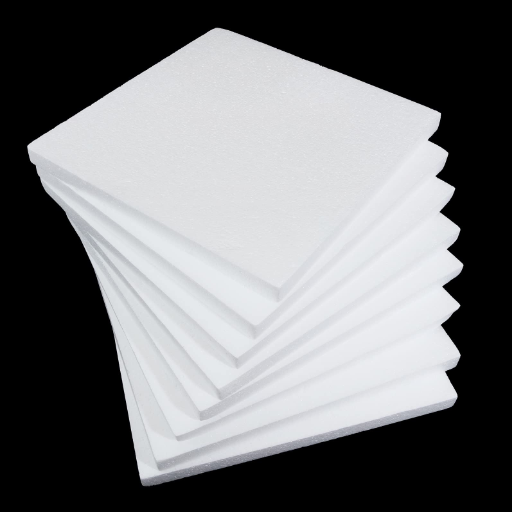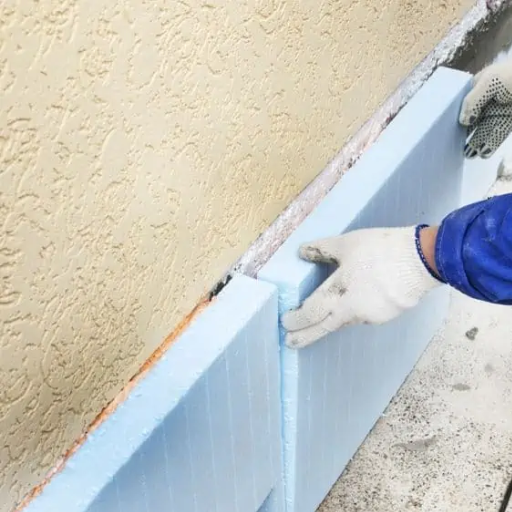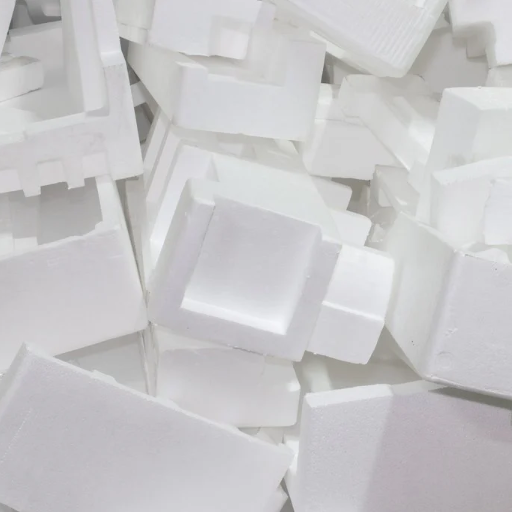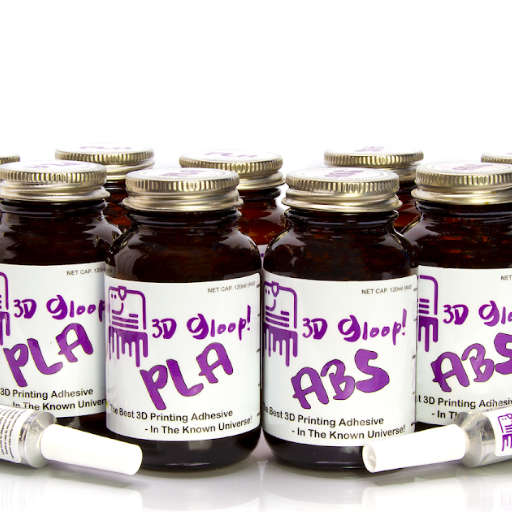The choice of adhesive when working with leather is vital in achieving a strong and durable bond. Any leatherworker with experience or even those attempting a DIY repair knows that using the right type of glue can single-handedly change the outcome of the entire project. In this guide, I analyze different leather glues and cements, explaining their various benefits, drawbacks, and the context in which they would be most useful. From contact to special leather cement, I will review the best products available so that you can choose the best fit for the intended use. After this post, you will know the most suitable glue for your requirements enabling you to obtain professional results on leatherworks.
What is the Best Glue for Leather?

As previously stated, the selection of the appropriate glue for leather is primarily dictated by the parameters of the gluing task at hand, including the type and texture of the leather its intended use, and required bond strength. For instance, contact cements such as Barge All-Purpose Cement is favored in general leatherworking because it has a very strong and flexible bond which is ideal for items that experience high degrees of wear and movement. For more specialized, precise work, Fiebing’s Leathercraft Cement would be the adhesive of choice. This glue is specific for leather and is non-toxic, making it water-based and easy to clean while still providing excellent hold. Other super glue type cyanoacrylate glue is also quite useful because it has quick bond formation capabilities. However, super glues are only useful for non-flexible items that require small repairs to be undertaken. Evaluating the balance between the application method, drying time, and durability needed makes the choice of leather glue correct.
Choosing the Best Glue for Leather Projects
When selecting the best leather glue for a specific project, it is essential to consider factors such as bond strength, flexibility, drying time, and ease of application. The top three adhesives widely regarded in leatherworking are:
- Contact Cement – Ideal for general leatherwork, contact cement like Barge All-Purpose Cement provide a strong, flexible bond capable of withstanding wear and movement. This type of glue is highly durable and versatile, making it a staple for various projects including belts, bags, and footwear.
- Water-Based Leather Adhesives – Fiebing’s Leathercraft Cement, a non-toxic, water-based adhesive, is excellent for precision work on leather. Its ease of cleaning, combined with its strong and flexible bond, makes it suitable for tasks requiring cleaner finishes or crafting complexity, often preferred for smaller, detailed pieces.
- Cyanoacrylate (Super Glue) – Super glue is optimal for quick repairs on non-flexible leather items. While it provides a fast and strong bond, it is best suited for rigid projects or minor repairs, as it lacks the flexibility required for items subject to frequent movement.
Each adhesive varies in its application methods and suitability depending on the project’s demands. To achieve the desired results, always test the adhesive on a small scrap piece of leather to confirm compatibility and effectiveness. Employing these insights ensures a durable, reliable bond tailored to any leatherworking endeavor.
Understanding Different Types of Leather Glue
Leather glue can be categorized into several types, each designed to handle specific needs and project requirements effectively. By consolidating information from leading sources, we can identify key features, applications, and considerations for the most commonly used leather adhesives:
- Contact Cement – Widely regarded for its strong and durable bond, contact cement is ideal for heavy-duty leather projects such as belts, shoes, or saddles. It is applied to both surfaces, allowed to dry until tacky, then pressed together. The bond is almost immediate, ensuring minimal movement once adhered. However, it is best to work with good ventilation owing to its potent solvents.
- Water-Based Leather Adhesives – Safe and versatile, water-based adhesives like leathercraft cement are user-friendly and non-toxic. These glues are particularly suited for precision tasks and intricate designs, providing a clean and flexible bond. They are also easier to clean up and are often preferred by beginner crafters or for detailed work on lightweight leathers.
- Cyanoacrylate Glue (Super Glue) – Known for its rapid bonding capabilities, cyanoacrylate glue is best for quick fixes on rigid leather items. While extremely strong, it lacks elasticity, making it less ideal for applications requiring flexibility or where the leather is subjected to frequent bending or stretching. Its use is primarily limited to decorative or stationary pieces.
- Polyurethane (PU) Glue – PU glue is a multi-purpose adhesive offering excellent water resistance and strength. It works well on leather shoes, outdoor gear, and other projects exposed to moisture. Although its curing time is slower than cyanoacrylate glue, the resulting bond is highly durable and versatile across a range of leather types.
- Hot Glue – Although not a primary choice, hot glue guns provide quick adhesion for temporary applications or low-stress projects. Their lower strength and reduced durability make them unsuitable for professional-grade leatherworking projects.
Key Considerations: The choice of glue depends on the specific requirements of your project, the type of leather, and the conditions the material will face. Regardless of the type, always prepare the surface by cleaning it thoroughly and apply the glue evenly for optimal results. Testing adhesives on scrap material remains an essential practice to ensure compatibility and prevent damage to the final project.
By understanding the strengths and limitations of each adhesive, leatherworkers can make informed decisions to achieve strong, reliable bonds tailored to their unique crafting needs.
Why Leather Cement is a Top Choice
When it comes to adhesives in leatherwork, nothing rivals leather cement. Apart from being incredibly strong, it is also flexible. Unlike other adhesives, leather cement can hold together various parts constantly exposed to stress and movement, something that is always the case for handbags, shoes, and upholstery. It also bonds without becoming flaky which ensures strong durability in tough conditions.
One of the best benefits of leather cement is its ease of application. It generally comes with a precise brush so consistent application is easy. After spreading the glue on the knives’ surfaces, once the glue dries out to tacky range, the bond is formed immediately upon both materials being smashed together. There is no need to spend time clamping thus workflow efficiency greatly improves.
Another key advantage of leather cement is its compatibility with almost every type of leather available, natural or synthetic. This also includes smooth, grainy, or suede surfaces making it a universal solution for detailed leatherwork. Moreover, there is the additional benefit that the leather cement comes with water-resistant features; nurtured bonded material is well protected from environmental moisture prolonging durability.
With its unmatched strength, flexibility, and ease of use, leather cement is a preferred adhesive for both professional and hobbyist leatherworkers. Its credibility for both functional and aesthetic leather applications proves that there is no other option when it comes to the craft.
How to Properly Use Leather Glue and Cement?
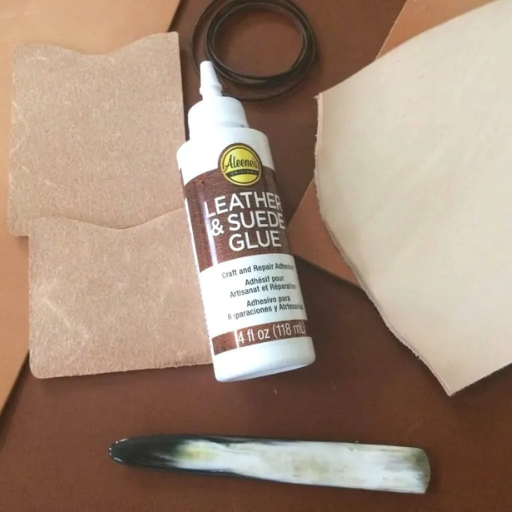
When working with leather glue and cement, the first step is to get the surfaces that will join ready. Clean dust and oil from both surfaces and make sure they are dry, as any contaminants can jeopardize the bond. Next, take a brush or any applicator and place a thin, even adhesive layer on both surfaces. Refer to the product-specific outline to see how long the glue or cement needs to dry, usually ranging from 5-10 minutes. After the glue is tacky, place both surfaces together while applying pressure to achieve maximum adhesion. For some larger and more complicated projects, additional flattening or rolling tools may be used to guarantee uniform bonding. Lastly, allow the necessary curing period according to the manufacturer’s guidelines to build up strength before use.
Steps for Applying Glue to Leather
- Prepare the Surfaces
Begin by cleaning the leather surfaces to remove any dirt, dust, or oils that might weaken the bond. Use a damp cloth or leather cleaner and ensure the surfaces are completely dry before proceeding.
- Apply the Adhesive
Using a brush or applicator, apply a thin and even layer of glue to each surface that will be joined. Ensure full coverage, as gaps in adhesive application can lead to weak spots in the bond.
- Wait for Tackiness
Allow the adhesive to dry to a tacky state, typically between 5-10 minutes, depending on the glue type and environmental factors. Refer to the specific product instructions for exact drying times.
- Press the Surfaces Together
Carefully align the surfaces and press them firmly together. Apply consistent pressure across the bond line to ensure full contact. Rolling tools or clamps can be used for even pressure distribution on larger or more intricate projects.
- Cure the Bond
Follow the manufacturer’s guidelines for the curing period, ensuring maximum strength and durability before handling or using the leather item. This curing time often varies but is critical for creating a long-lasting bond.
By adhering to these steps, you can achieve professional-grade results when gluing leather for your projects. Always consult the adhesive manufacturer’s specifications for optimal performance.
Tips for Achieving a Strong Bond with Leather
- Choose the Right Adhesive
Select an adhesive specifically designed for leather, such as contact cement, polyurethane-based glue, or cyanoacrylate. Each type has distinct advantages depending on the application. For general use, contact cement is highly effective, while polyurethane glue is better for heavier-duty repairs.
- Prepare the Surfaces Properly
Ensure both leather surfaces are clean, dry, and free of dust or oils. Use a fine-grit sandpaper or a scuffing tool to roughen the bonding surfaces slightly, enhancing adhesive penetration and grip.
- Apply Adhesive Evenly
Use a brush or applicator to spread a consistent, thin layer of adhesive. Avoid excessive application, which can lead to uneven curing or weak spots in the bond. If recommended by the adhesive manufacturer, apply glue to both surfaces for maximum strength.
- Use Adequate Pressure
When pressing the leather pieces together, apply firm and even pressure over the entire bond area. Clamps, weights, or rollers are effective tools for maintaining even pressure, especially on large or complex projects.
- Allow Sufficient Curing Time
Curing time is crucial for achieving optimal strength. Avoid stressing or handling the bonded leather until the adhesive has fully cured, often between 24-48 hours, as per manufacturer guidelines.
- Work in the Right Conditions
Perform the gluing process in a well-ventilated space with stable temperature and humidity. Extreme environmental conditions can affect adhesive performance and drying times.
By following these detailed instructions, you can ensure a strong, reliable bond for your leather projects, whether creating new items or performing intricate repairs. Always reference the chosen adhesive’s user manual for specific application recommendations.
Common Mistakes to Avoid When Using Leather Adhesive
- Using the Wrong Adhesive Type
Not all adhesives are suitable for leather. Selecting an adhesive not specifically formulated for leather can lead to weak bonds or material damage. Always ensure compatibility by checking product specifications.
- Failing to Properly Prepare the Surface
Applying adhesive to dirty, oily, or uneven surfaces can significantly reduce bond strength. Clean and sand the leather surfaces as needed to ensure proper adhesion.
- Overapplying or Underapplying Adhesive
Using too much adhesive can cause seepage and uneven bonding, while too little adhesive may result in poor contact and strength. Apply a thin, even layer for optimal results.
- Impatience with Curing Time
Handling or stressing the bonded item before the adhesive has fully cured weakens the bond. Always adhere to the curing times recommended by the adhesive manufacturer.
- Neglecting Safety Precautions
Many leather adhesives contain chemicals that emit strong fumes. Failing to work in a well-ventilated area or neglecting the use of protective equipment can pose health risks.
Addressing these common mistakes will enhance the durability and quality of your leather projects. Always prioritize following the manufacturer’s instructions and allocate sufficient time to complete each step properly.
What are the Top Brands of Leather Adhesive?

There are several reputable brands known for producing high-quality leather adhesives. These include:
- Barge All-Purpose Cement
Renowned for its strong bond and versatility, the Barge is a preferred choice among professional leatherworkers for its durability and ease of use.
- Fie Bing’s Leathercraft Cement
A water-based adhesive, Fiebing’s offers a non-toxic and eco-friendly option that provides reliable adhesion for leather projects.
- Loctite Ultra Gel Control
Featuring a rubber-toughened formula, this adhesive is ideal for flexible leather repairs and is known for its precision application capabilities.
- Gorilla Glue Clear
Highly rated for multi-surface bonding, Gorilla Glue provides a strong, waterproof seal, making it an excellent choice for outdoor leather items.
- Tandy Leather Eco-Flo Cement
Designed specifically for leathercraft, this product ensures a strong bond while being safe for beginners and experts alike.
These brands are consistent in delivering reliable results, making them top recommendations for leatherworking projects. Always evaluate your specific project needs to choose the most suitable adhesive.
Review of Fiebing’s Leathercraft Cement
Fiebing’s Leathercraft Cement is considered a strong adhesive by leatherwork craftsmen. Its non-toxic, water-based formula makes it safe and environmentally friendly, as well as easy for any user, professional or amateur, to apply. The adhesive has great bond strength for many types of leather and dries rapidly to a durable, flexible finish that does not crack under stress. Users appreciate the cement’s easy application process which allows the user to make fine adjustments before the cement dries. Although not as effective under extreme outdoor conditions compared to solvent-based adhesives, its eco-friendliness, affordability, and versatility make it a staple in nearly all leathercraft projects. To achieve optimal results, both surfaces of leather must be clean and an even layer of adhesive must be applied before pressing and securing the two pieces together.
The Benefits of Using Barge Cement for Leather
Barge Cement is considered one of the best adhesives for leatherworking. This is due to its high-strength bond and versatility. Barge is a neoprene-based contact cement that works best for waterproof seals. This makes it ideal for leather goods that are worn daily or subjected to harsh conditions, like shoes, bags, and belts. With Barge, the extraordinary adherence is not limited to leather alone, but works on many other materials like rubber, fabric, and wood as well, making it useful for an assortment of projects.
Barge Cement’s standout feature is its exceptional temperature resistance, meaning the bond will not break apart under extreme conditions. In addition, the curing time helps save time during crafting. After curing, the bond is flexible yet strong, which is critical for applications that need some movement or bending. However, users need to be careful as Barge Cement’s strong solvent-based formula needs proper ventilation as well as precautions during use. Still, its performance is unparalleled, especially in professional-grade leathercraft which makes Barge an indispensable tool for artisans who want long-lasting, high-quality results effortlessly.
Why Shoe Goo is Popular for Boot Repair
Shoe Goo is a highly popular choice for boot repair due to its versatility, durability, and ease of use. This adhesive creates a strong, waterproof bond, making it ideal for sealing cracks, reattaching soles, or reinforcing worn areas of boots. Its flexible formula ensures it withstands the natural motion of footwear, preventing cracking or peeling over time. Additionally, Shoe Goo is resistant to harsh environmental conditions, including rain, snow, and extreme temperatures, thereby extending the lifespan of repaired boots. Its ability to not only bond but also fill gaps or rebuild damaged areas makes it a versatile solution for both minor and extensive repairs, commonly favored by outdoor enthusiasts and professionals alike.
How to Choose the Right Leather Glue for Your Project?

When selecting the right leather glue for your project, consider the type of leather and the intended application. For repairs involving flexibility, such as shoes or bags, choose an adhesive with a flexible formula to prevent cracking. If durability and moisture resistance are essential, opt for a waterproof and long-lasting glue. For precise applications, like attaching delicate pieces, use a fast-drying or contact adhesive that ensures a clean bond without excess residue. Additionally, ensure the adhesive is compatible with leather materials to avoid damage or discoloration. Evaluating these factors helps ensure both the strength and longevity of your leather project.
Considerations for Leather Craft Cement
Leathercraft cement is an adhesive used for leather projects that require maximum bond strength. When purchasing leather craft cement, look to its bonding strength, curing period, and flexibility. The best quality leather cements bond very well, but at the same time, they are flexible enough to permit movement for leather goods like belts, wallets, or upholstery.
To achieve the best results, use leather cement that is non-toxic and has a definite formulation for leather use. Pay attention too to drying time—slower drying cement cements are great for adjustments during assembly, while faster drying option suit efficient production settings. These cements are critical not only for bonding but also for projects exposed to moisture or humidity, reinforcing the bond’s durability.
Knowing how to prepare the surface is essential when using leather craft cement. Additions of roughness to the cleaned leather surface maximizes adhesion. Remember to follow manufacturer instructions in detail, including cement application and cure time. If you stick to the instructions and your project’s requirements, leather craft cement will give you professional quality results.
Comparing Water-Based vs. Solvent-Based Adhesives
The adhesive’s chemical makeup, performance level, and safety aspects, all contribute to the key differences between water and solvent-based adhesives. Water-based adhesives are less toxic, generate fewer VOC emissions, and are environmentally friendly because they utilize water as a carrier. They are useful for porous materials and applications that require flexibility, but often lack the same amount of initial tack or strength available from solvent-based adhesives.
On the flip side, solvent-based adhesives are organic, and use solvents as carriers while also being useful for high-performance bonding on non-porous surfaces like metal, plastic, or coated materials. They are better withstanding excessive heat, moisture, and chemical exposure, meaning they can thrive under stronger conditions. This also means they carry a stronger odor, increased VOC emissions, and are considered flammable which makes proper ventilation key when using these types of adhesives.
The decision should take into account material compatibility, environmental impact, and specific operational requirements like curing periods and durability. Water based adhesives are preferred for safer indoor applications while solvent based do better in industrial or extreme situations.
Factors to Consider for Durable Leather Projects
When working on durable leather projects, selecting the right adhesive and materials is critical to achieving both strength and longevity. Key considerations include:
- Type of Adhesive: Leather’s porous nature demands adhesives with high flexibility and bonding strength. Water-based adhesives are ideal for safer, eco-friendly use and simpler application on lighter leather. For heavy-duty or industrial-grade projects, solvent-based adhesives offer superior bonding properties, particularly for non-porous or treated leather.
- Environmental Conditions: Exposure to heat, moisture, or prolonged wear significantly affects leather projects. Ensure that the chosen adhesive offers resistance to environmental stressors like high temperatures or humidity to maintain the integrity of the bond over time.
- Curing Time and Workability: Fast-curing adhesives may benefit time-sensitive applications while slower-curing options allow for adjustments during assembly. Evaluate the drying time based on the complexity and scale of the project.
- Leather Treatment Level: Materials such as coated or treated leather may require adhesives with enhanced penetration or performance characteristics, as their surfaces can hinder bonding compared to untreated leather.
- Project Usage: Consider the intended use of the leather product. High-stress applications, such as furniture or footwear, demand robust adhesion and durable finishing, whereas decorative or lighter projects may benefit from less intensive adhesive requirements.
By balancing these factors with the specific demands of your project, you can ensure optimal results in crafting durable, professional-quality leather goods.
Can Super Glue Be Used on Leather?

Yes, super glue may be employed on leather with caution; however, it is not the best adhesive for all leather applications. Super glue is handy in situations that require a fast bond. Super glue works best with small repairs and projects that require precision. It should be noted, however, that superglue becomes brittle with time and it does not perform well under conditions of high stress, flexibility, or constant use. Ideally, adhesives specifically made for leather should be used because they provide the desired bond while being flexible enough not to damage the leather.
When to Use Super Glue on Leather
Super glue can be used effectively on leather for small, quick repairs or projects requiring precise application. It is particularly suitable for fixing minor splits, securing decorative elements, or addressing situations where a rapid bond is critical. However, it should only be applied when the leather is not subjected to frequent bending, stretching, or heavy use, as superglue tends to lose its integrity under stress and repeated movement. For lightweight repairs or infrequent-use items, super glue can serve as a temporary solution. For more demanding or flexible leather projects, it is better to use adhesives specifically engineered for leather to ensure durability and elasticity.
Pros and Cons of Using Super Glue for Leather
Pros:
- Quick Bonding: Super glue cures rapidly, making it ideal for urgent repairs or projects requiring immediate results.
- Precision Application: Its thin consistency enables precise application, especially for intricate designs or small leather components.
- Ease of Use: Super glue is widely accessible and straightforward to apply without requiring specialized tools or equipment.
- Versatility: Compatible with several other materials in addition to leather, making it useful for mixed-material repairs.
Cons:
- Brittleness Under Stress: Super glue becomes rigid when cured, which may lead to cracking or failure under frequent bending or stretching.
- Limited Durability: The adhesive is not suitable for high-use or heavy-duty leather items due to its low flexibility and reduced longevity.
- Potential for Material Damage: If misapplied, super glue can leave stains or damage the surface of the leather, requiring caution during application.
- Temporary Solution: While effective for quick fixes, superglue does not provide the long-lasting resilience needed for professional-grade leatherwork.
Super glue is best utilized for minor leather repairs or low-stress projects where its limitation on flexibility and durability can be managed effectively. For applications demanding reliability and elasticity, a dedicated leather adhesive remains the superior choice.
Alternative Glues for Leather Projects
When working on leather projects, selecting the right adhesive is critical to ensure durability and precision. Common alternatives to traditional leather glues include contact cement, super glue (cyanoacrylate), and rubber cement. Each adhesive has specific applications and limitations that make it suited to particular project requirements.
- Contact Cement
Contact cement is widely used in leatherworking due to its superior bonding strength and flexibility. It is ideal for joining large or weight-bearing sections of leather and resists peeling over time. To use effectively, apply the adhesive evenly to both surfaces, allow it to dry until tacky, and then press the pieces together firmly.
- Super Glue (Cyanoacrylate)
Super glue is suitable for quick fixes or small, precise repairs in leather projects. It bonds nearly instantly and works well for areas requiring detailed application. However, super glue lacks flexibility and may result in cracks over time when used on areas prone to bending or stretching.
- Rubber Cement
Rubber cement is valued for its repositionable property, allowing adjustments before the glue completely cures. It is an excellent choice for temporary adhesive needs or lightweight leatherwork. Once dry, rubber cement remains flexible, making it a practical option for items requiring movement, although it may not provide the same permanence as contact cement.
When choosing an adhesive, consider the specific demands of your leather project, including the type of leather, intended usage, and required flexibility. Always prepare the surfaces properly by cleaning and roughening them for optimal bonding results. Each adhesive has benefits and trade-offs, so selecting the right one ensures reliable and durable results.
References
Frequently Asked Questions (FAQ)
Q: What is the best glue to use on leather for craft projects?
A: For craft projects, leathercraft cement is often recommended as the best glue to use because it is a water-based adhesive that is easy to work with and dries clear. It works great for bonding leather and is suitable for various leather goods.
Q: Is rubber cement a good option for bonding leather?
A: Yes, rubber cement is a popular choice for leather projects because it provides a strong, flexible bond. It is ideal for temporarily holding leather in place or for projects that require repositioning before the cement dries.
Q: Can I use superglue on leather items like wallets?
A: While superglue can be used on leather, it is not always the best option for leather goods like wallets. Superglue may dry hard and could cause the leather to become brittle. It’s best to use leather-specific adhesives like leather weld for a more flexible and durable bond.
Q: What is the best leather glue for repairing shoes?
A: Shoe glue, such as contact cement or specific products like Aquaseal, is often recommended for repairing leather shoes. These adhesives provide a waterproof and durable bond that can withstand the flex and wear of shoes.
Q: How does Aquilim 315 compare to other leather glues?
A: Aquilim 315 is a water-based contact adhesive known for its strong bond and flexibility. It is a great choice for leather projects requiring a permanent bond. It’s water-resistant and works well on various types of leather.
Q: Is PVA glue suitable for leather projects?
A: PVA glue, or white glue, is generally not recommended for leather as it may not provide a strong enough bond for leather materials. Instead, leather-specific or all-purpose cement and glue are more reliable choices.
Q: Why should I choose leather-specific glues over general-purpose adhesives?
A: Leather-specific glues are formulated to bond leather effectively and maintain flexibility, which is crucial for leather products. General-purpose adhesives may not offer the same level of adhesion and can cause damage to quality leather over time.
Q: Can contact cement be used for joining two pieces of leather together?
A: Yes, contact cement is excellent for joining two pieces of leather together. It provides a strong, permanent bond that is ideal for projects where durability is important, like furniture or larger leather goods.
Q: What kind of leather is best suited for using master cement?
A: Master cement works well with a variety of leathers, including quality leather and suede. It provides a strong, waterproof seal that is perfect for projects requiring a robust adhesive solution.
Q: How long does it take for leathercraft cement to dry?
A: Leathercraft cement typically takes about 15-20 minutes to dry to the touch and 24 hours to cure completely, depending on the conditions. It’s important to allow sufficient drying time to ensure a strong bond.
















